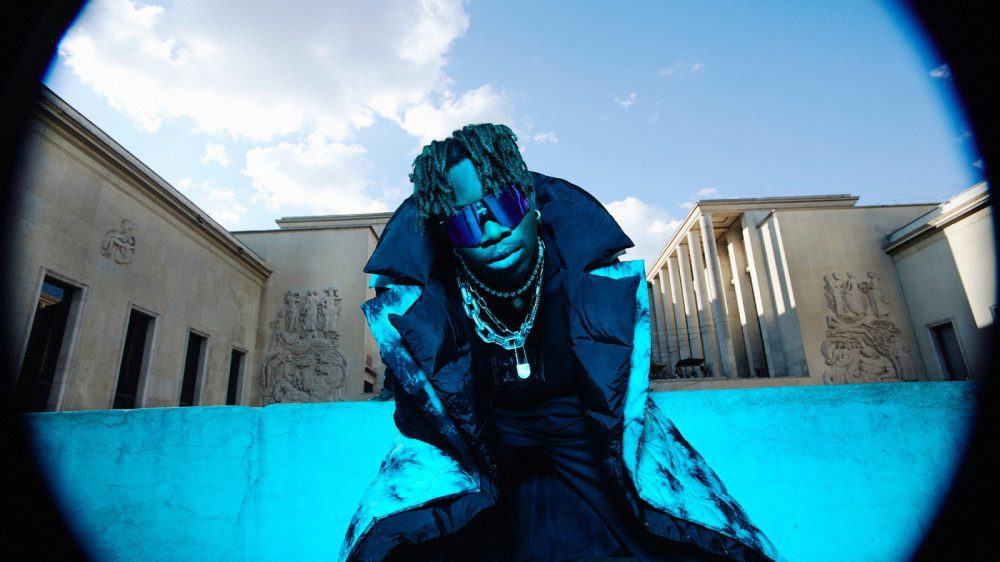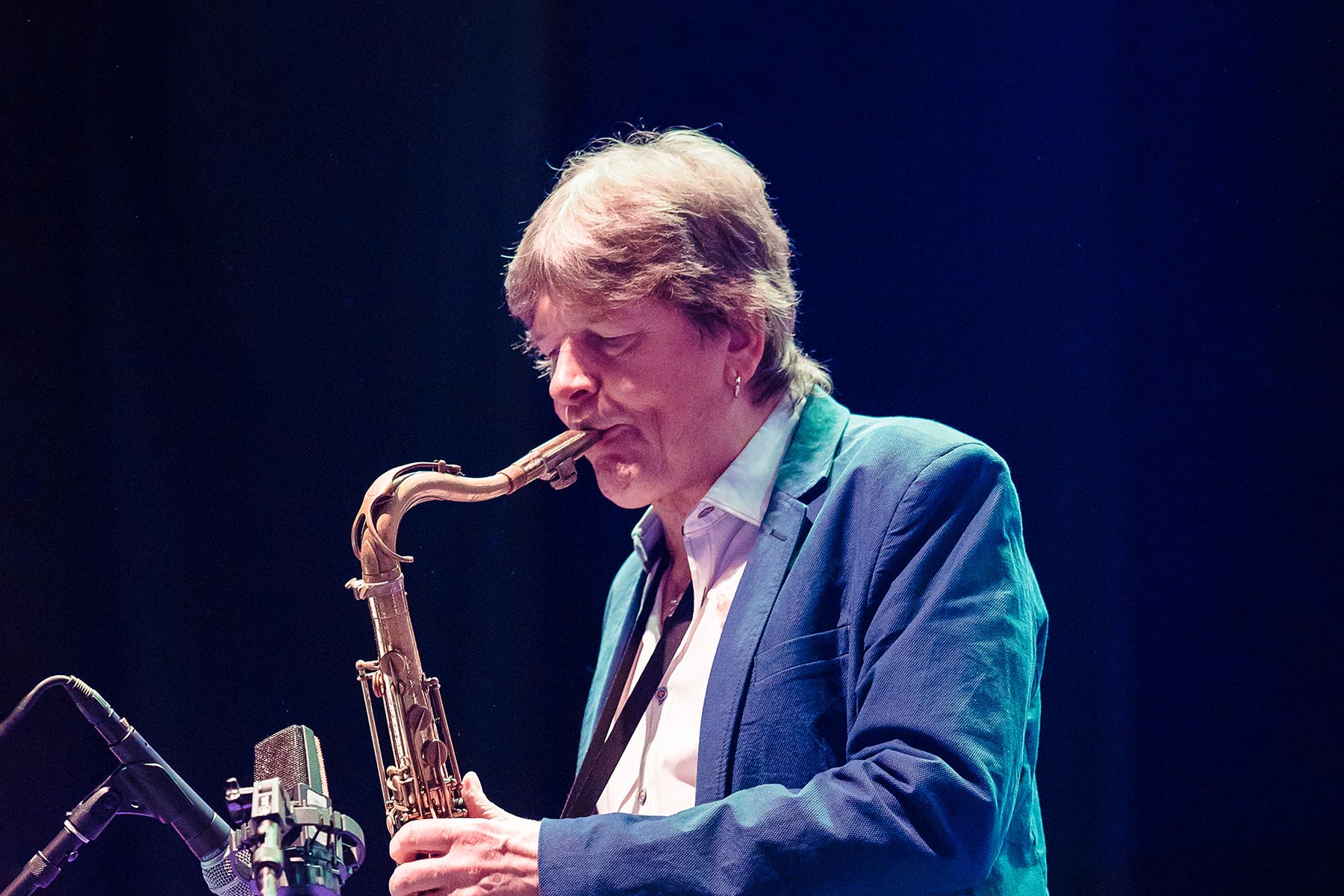
The Beatles’ ‘Revolver’ Box Set Pulls Back the Curtain on the Fab Four’s Shared Genius
Some Fab Four folklore: In 1966, when Paul McCartney tried to impress Bob Dylan with an acetate of “Tomorrow Never Knows” — the sprawling, experimental acid freakout that concludes the Beatles’ seventh (and arguably best) LP, Revolver — Dylan quipped, “Oh, I get it: You don’t want to be cute anymore.”
In the liner notes for the weighty, new Super Deluxe edition of the album, the Cute One offers a different take: In the half a decade since they’d busted out of Liverpool’s bar-rock caverns, they’d simply become worldly. They’d discovered musique concrete, Indian music, Motown, and drugs, drugs, drugs. Although a sempiternal intellectual like Dylan might not have been able to see it at the time (he reportedly countered Macca by playing him his own witty-not-cute Blonde on Blonde acetate), the Fab Four were no longer a boy band and hadn’t been for a while, at least since they explored Dylanesque folk rock on Rubber Soul. In fact, by 1966, they’d become sorta sophisticated.
“I vaguely mind people knowing anything I don’t know,” McCartney deadpanned in ’66, according to Rob Sheffield’s excellent Dreaming the Beatles. And nowhere is the Beatles’ voracity to know more visible than on Revolver.
What’s clearer now in hindsight, especially thanks to this new box set, is how the quartet took its collective influences and refracted them into something cohesively “Beatles.” Sifting through the collection’s outtakes and sessions is like showing up unannounced at the Beatles’ shared row house in Help! and watching them dress and tidy up for company. When you’re used to seeing carefully preened mop tops and perfectly dusted rotating bookshelves, witnessing the mess — the editing process — can be jarring. But it’s also essential to comprehending the Beatles’ genius without taking it for granted.
The box’s primordial versions of “And Your Bird Can Sing,” “Got to Get You Into My Life,” and “Here, There and Everywhere” reveal obvious debts to the Byrds’ acidic jangle, Motown horn rave-ups, and the Beach Boys’ melodiousness, respectively (though by the time McCartney nailed “Here, There and Everywhere,” he was doing an impression of “Yesterday” cover artist Marianne Faithfull’s then-unimpeachable mezzo-soprano). As they workshopped the songs for two-and-a-half months (for reference, they cut Rubber Soul in a month), they refined them into undeniable Beatles masterpieces full of surrealism and authentic sentimentality. As with earlier holistic anthologies for Sgt. Pepper’s, the White Album, and Abbey Road, the Revolver Super Deluxe edition shows the journey of each song in rehearsals and completed mono, refurbished stereo, and Dolby Atmos mixes.
At a recent playback of the new mixes in New York, Giles Martin (son of George) shared that sometimes his dad would joke about the Beatles’ demos, “This is the greatest band in the world?” The box’s outtakes show how the musicians challenged themselves beyond their capabilities and then improbably pushed themselves to achieve their visions: McCartney learning just what the heck orchestral vibrato is for “Eleanor Rigby,” Harrison making it all the way through “Love You To” on sitar, and John Lennon and McCartney getting through “And Your Bird Can Sing” without giggling. In the surviving snippets of studio banter, the vibe sounds jolly, curious, and most surprisingly of all after watching Get Back, convivial. They collectively wanted to create a Beatles album, and the best Beatles album at that, full of pomp and swagger.
By the time Revolver came out, the Beatles had been releasing two albums a year, touring, and making movies. It had been three exhaustive years of nonstop work, and even though none of them were older than 25 when they recorded Revolver, they were ready to behave like adults. They started maturing their sound on 1965’s Rubber Soul with a little help from a sitar on Lennon’s lilting meditation on infidelity, “Norwegian Wood,” the grown-up perspectives on love of “In My Life,” and Harrison’s wistful yearning on “If I Needed Someone.” They’d also discovered pot, which fueled McCartney’s creativity for years. That album heralded the group’s long creative crescendo that ended with a crashing piano chord in 1970.
With Revolver, the Beatles finally took the time to untether themselves from their past. They got a rare break from touring and moviemaking, catching their breath between tokes and trips. When they finally reconvened at Abbey Road, the first thing they recorded, strangely, was Lennon’s acid bath “Tomorrow Never Knows,” then known as “Mark I.” Beatlemaniacs have already heard the sleepy, eerie first take of the song on Anthology 2, also included here, but in the context of the Revolver box, it’s stunning how the tune (more of a meditation really) with its dolorous, unchanging base loop (which sounds a bit like a cello with emphysema) was nearly fully formed at its onset. Lennon’s lyrics, kind of an interdimensional blues ripped from Timothy Leary’s interpretation of the Tibetan Book of the Dead, still sound ominous and anything but cute.
And then they pulled a 180 by next working on McCartney’s paean to pot, “Got to Get You Into My Life,” which initially sounded like a Partridge Family jam, with the first version’s extra lyrics, “Got to get you into my life – somehow some way,” and long organ breaks. After “Tomorrow Never Knows,” they couldn’t quite get back into a pop frame of mind. In the first take, the chorus just kind of dies on this long organ note. Then they tried it again, this time with honking fuzz guitar, but it still feels empty. Then, there’s an instrumental with the brass section, but the bass guitar overwhelms everything. The progression here is stunning since the song eventually became an anthem.
Similarly, the first take of “Love You To” (then known as “Granny Smith,” christened after engineer Geoff Emerick’s favorite apple, since Harrison struggled with titling songs) finds the Quiet One singing the song over plodding acoustic guitar, leaving a little room for sitar ostentation in his mind. The acoustic take feels very goth rock (save the whole “make love singing songs” nonsense), and it becomes darker, more mysterious, and sexier as they develop it. The next included version is a sitar instrumental over which Harrison hums the melody. Another version (“Granny Smith, Take Seven”) sounds more complete, despite some surprisingly sour McCartney harmonies. Ultimately, “Love You To” on Revolver became Harrison’s best sitar experiment, squarely in the middle of pop and Harrison’s reverence for Indian music.
The Fabs (and likely George Martin) show similar editorial sagacity in the evolution of “Taxman,” ultimately cutting Lennon and McCartney singing “Anybody got a bitta money?” over and over as backing vocals from the session version here. There’s also some annoying lead-guitar flourishes they wisely cut. An outtake of “She Said She Said” (Lennon’s ultimate acid trip) contains the later excised line “And it’s making me feel like my trousers are torn.” And then there’s the studio banter surrounding “I Want to Tell You,” in which Harrison can’t decide what to call the consarned song; Ringo Starr shrewdly suggests “Tell You.”
Studio banter is also the highlight of “Eleanor Rigby,” as Martin educates young McCartney, age 23, on classical music. Martin asks McCartney whether the double quartet should use vibrato or not and asks the musicians to play him examples, but McCartney admits he can’t hear a difference. They opt for “without,” which ultimately sounds correct since the arrangement conjures both the score to Psycho and one of Vivaldi’s Four Seasons in its approximation of the loneliness Miss Rigby feels picking up rice and Father McKenzie ponders while darning socks in the dark. The lusher sound of vibrato just would have sounded off for a song about solitude. The instrumental version here features a few of the string players sounding out of tune and a little sloppy, again showing how they tightened it up into one of McCartney’s best songs. (What’s curiously missing in this box set — and it may not exist — is a recording of McCartney playing the song on either piano or acoustic guitar before Martin arranged it for the double quartet.)
The most improbably surprising song here, though, is “Yellow Submarine.” For the box set, the Beatles’ archivists discovered Lennon’s work tape, which finds him keening about his doldrums over a folky acoustic guitar: “In the place where I was born, no one cared, no one cared.” It sounds both like a Daniel Johnston cassette and the Stanley Brothers bleating “Man of Constant Sorrow” — and nothing like a children’s song about psychedelic seafaring.
The next demo here features Lennon and McCartney together talking out the song. They sing the same melody with different lyrics, inspired by a dream McCartney had: “In the town where I was born, lived a man who sailed the sea/And he told me of his life and the land of submarines.” They come together for the chorus, which is more childlike than even Ringo’s version with its call-and-response comments: “We all live in a yellow submarine (Look out!), yellow submarine (Get down!), yellow submarine. …” There’s also a take with Starr singing, without all the special effects, which sounds a bit like “Puff the Magic Dragon” (thankfully with no “Get down” callouts). And a final outtake starts with Lennon doing a pseudo-military chant about submarines that has all the song’s sound effects they recorded cranked up.
Sometimes, when the outtakes show the emperors without their clothes, it’s hard to imagine how great the songs could become. On a version of “Here, There and Everywhere” (McCartney’s greatest silly love song, which, incidentally, holds some of his most brilliant modernist lyrics: verse one is about “here,” verse two about “there,” and the third goes everywhere), Macca’s voice sounds raw and tired. Eventually, he got the idea to do the Faithfull impression (and that gorgeously melting “Love never dies” harmony), but the song’s full genesis didn’t make it into the box set. The drug-dealer ditty “Doctor Robert” has always been the album’s weakest tune, and the outtake here doesn’t add any real insight. And the version of “And Your Bird Can Sing,” on which Lennon and McCartney fall apart in hysterics while harmonizing, shows just a couple of twentysomethings cutting loose.
In fact, it’s the looseness of it all that comes through in the banter. On one take of “I’m Only Sleeping,” which sounds a bit like a campfire song on some versions here, Lennon sounds alert and awake asking, “Martin, will you get this boy a plectrum [guitar pick] please?” Before “For No One” (another modernist lyrical experiment with its unreliable narrator, a jilted man, speaking in the second person), McCartney and Starr discuss whether to keep the rhythm straight before settling into a swinging groove. And on a take of “She Said She Said” — the last song they ran through for the album — someone keeps morale up saying, “Come on, come on. Last track, last track, last track.” They were rushing to get it done so they could get to America for a final tour and the press firing squad for Lennon’s assertion that they were more popular than Jesus, when, in fact, by this point Beatlemania had become its own religion.
The box set also includes an EP sporting new stereo mixes and the original mono versions of “Paperback Writer” and “Rain,” the group’s non-album singles circa Revolver. In the sessions, on a rehearsal of the former, they rush through the chord changes and leave space for the vocals. With “Rain,” they included the song at its actual, ripping speed since they slowed it down for the 45, and McCartney’s nimble bass playing on both still sound jaw-dropping.
The box set’s producers sandwich all of the outtakes with new stereo mixes of the songs by Giles Martin and the original mono mixes, which is how the band in 1966 wanted listeners to experience it. As with the Sgt. Pepper deep dive, Martin’s stereo mixes are welcome since the originals were novelties with Starr’s drums often panned hard left with suffocating ferocity; here, they’re right down the middle and McCartney’s bass comes off punchy. The mono mixes present the band as something of a self-contained chamber group and songs like “Good Day, Sunshine,” and their American soul imitation “Got to Get You Into My Life” have a strange elasticity to them that stereo can’t replicate. The fact that George Martin & Co. found room in the audio spectrum for all of the Beatles’ screechy loops in the monaural “Tomorrow Never Knows” is its own acid trip. (Incidentally, if any record-label types are reading this, please please us listeners by releasing the 2009 box set The Beatles in Mono to streaming services as an alternative to the wonky stereo mixes of all the albums Giles Martin hasn’t gotten to fixing up yet. The original stereo mixes just don’t work for headphones.)
There is also a new Dolby Atmos mix of Revolver which sounds incredible if you can find the right sound system. Giles Martin collaborated with filmmaker Peter Jackson’s Get Back audio team to “de-mix” the Beatles’ original crowded multitrack tapes and extract each individual sound so he could reposition them in a wider spectrum. The most impressive songs in the new presentation are “Good Day, Sunshine,” which finds the choruses echoing around and, of course, “Tomorrow Never Knows,” in which McCartney’s seagull sound effects sound as though they’re flying overhead.
The box’s included book holds pages and pages of informative liner notes, breaking down the genesis of each song into the myopic detail that diehard Beatles fans want, as well as a broad overview of the months leading up to Revolver’s recording and the reception after it came out. Questlove penned an essay mostly about how he resisted the Beatles for years but eventually relented and decided he liked them, praising Starr’s drumming and McCartney’s bass playing along the way. Artist Klaus Voormann included a graphic novel about how he illustrated one of the hallmarks of psychedelic art (without using any color). And McCartney included a few words about how the Beatles would throw out any formula they stumbled on and how “all in all, [Revolver is] not a bad album.”
But with nearly 60 years of hindsight and several revealing outtakes in this edition, it’s clear that it might have been simply an OK album had they not refined it. If McCartney hadn’t explored his interest in Karlheinz Stockhausen and John Cage, the Beatles never would have become the most successful experimental rock band of all time. If Lennon hadn’t dropped acid with Peter Fonda in ’65, he might not have fused rock with Harrison’s love of Indian music for “Tomorrow Never Knows” or challenged teenyboppers with a lyric like “I know what it’s like to be dead.” If George Martin hadn’t insisted on the double quartet playing “Eleanor Rigby” straight, it might have sounded syrupy like a Sinatra song. If they hadn’t had the leeway to keep innovating after Rubber Soul, they never would have moved on to Revolver or their next album, Sgt. Pepper’s Lonely Hearts Club Band. The album set up everything, right through to “The End.”
Revolver heralded the Beatles’ metamorphosis from greatness into immortality. They took a break, had a think, and produced one of the most daring albums ever. By 1966, the Beatles had not only led the British Invasion — with Revolver, they won the war. And Dylan was right: There was nothing cute about it.





